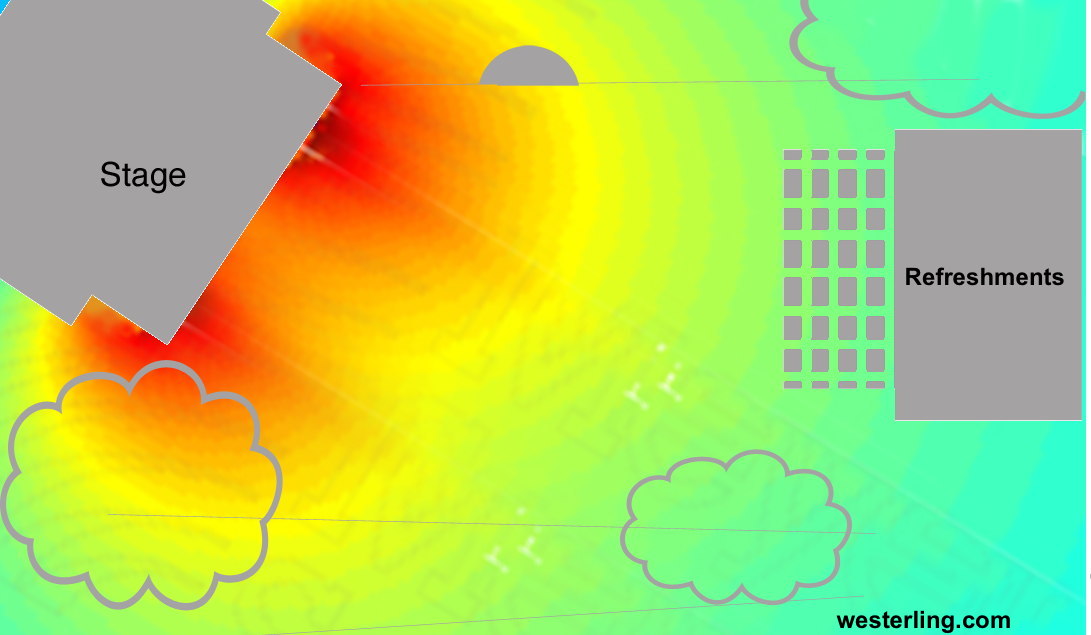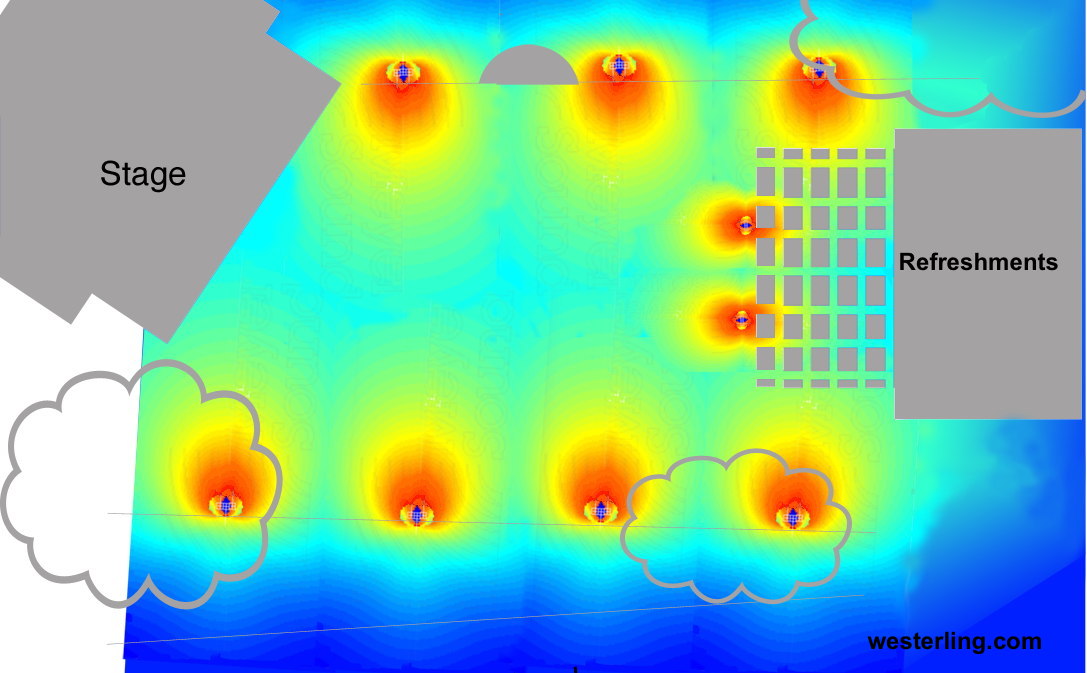Passive Amplification System for Outdoor Performance Space
- Posted by J W
- on Jul, 22, 2015
- in Technology
- Blog No Comments.
I recently had the opportunity to use my acoustical and musical knowledge to design an acoustical enhancement system into an outdoor stage area.
Situation: Acoustic instruments weren’t enough to fill the outdoor space when an audience was present. A large “shell” behind the space is not possible due to local zoning and financial limitations. Also existing attempts to use a PA system for amplification leads to feedback and “volume wars”.
Task: Design a simple, and relatively inexpensive method of electrically enhancing the listening experience – that is completely invisible. Action: Multple Pressure Zone mics pick up any audio that happens on stage. The sound is amplified (with loudness limiting), delayed, and sent to 8 strategically placed and disguised speakers.
Result: Performances are now easily heard, and musicians in the audience are quick to ask why the performances sounds so clear. Cost: under $5000.00
– – –
Listening Enhancement System Conceived by: Jonathan Westerling 2012
Conductor Gabriel Sakakeeny, himself a noted audio expert, has endorsed my distributed speaker approach. “This distributed approach is far better for minimum power but maximum audibility across the area. Some of the current coaxials are really good. EQ’d for a neutral response, the system would be very ‘stealthy’ and hard to complain about. [Microphones] permanently installed so that they could be invisible. You stand on the stage and you just happen to be more audible than people not standing on the stage. ”
GRAPHICAL COMPARISON:
Here is a simple comparison: A typical reinforcement system would have a pair of speakers on the stage. The speakers have to be loud enough to cover across the entire audience area, which means they have to use a high sound volume and require mics to be placed manually near the musicians and manually adjusted each time to avoid feedback. Here is a graphic of a such a typical sound system. The colors correspond to the amount of the sound reinforcement being heard. The yellow, green and aqua volume levels are high enough to be clearly heard. (model: Meyer Sound Inc., Berkeley)
Typical Sound System:
By contrast, a distributed system uses several small speakers, permanently installed surrounding the audience area. Each speaker is facing inward. And since each speaker has a small area to cover, the sound coming out of it is only a fraction of the volume. The result is that the audience hears a subtle reinforcement of what is happening on stage from the speaker that is nearest to them. Here is a graphic showing a sample distributed sound system installation with nine small hidden speakers. Again, the colors correspond to the amount of sound reinforcement being heard.
Distributed Speaker System (sample layout)


